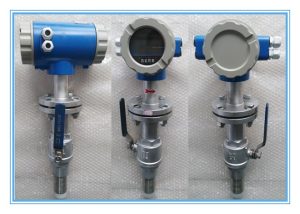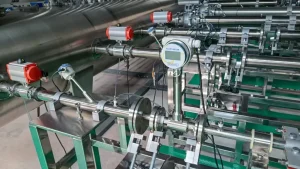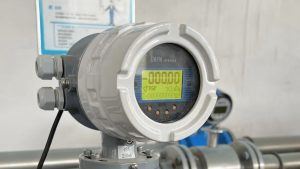In any fluid control system, whether it’s in industrial automation, chemical processing, municipal water treatment, or HVAC systems, two key components work side by side: flow meters and valves. These two elements are often discussed independently, but in reality, they are deeply interconnected. Understanding their relationship can lead to smarter design, better system performance, and more accurate control of flow processes.
In this guide, we¡¯ll explore the critical link between flow meters and valves, how they influence each other, and why this relationship matters to engineers, technicians, and plant operators alike. Whether you¡¯re designing a new system or troubleshooting an existing one, this knowledge is essential for achieving precision, efficiency, and reliability.
What Are Flow Meters?
Flow meters are devices used to measure the rate of flow of a fluid ¡ª whether it’s liquid, gas, or steam ¡ª through a system. There are several types of flow meters including:
Electromagnetic (Magmeters)
Ultrasonic
Turbine
Coriolis
Thermal mass
Differential pressure
Each has its own strengths depending on the application, accuracy needs, and the type of fluid involved.
Flow meters provide critical data for system monitoring and control, especially in industries where fluid measurement precision directly affects product quality, safety, or compliance.
What Are Valves?
Valves are mechanical devices used to control the flow of fluids. They do this by opening, closing, or partially obstructing flow paths.
Common types of valves include:
Ball valves
Gate valves
Globe valves
Butterfly valves
Control valves (actuated or manual)
Unlike flow meters, which measure flow, valves actively regulate it. They¡¯re essential in maintaining system pressure, flow rate, and even direction of fluid movement.
The Purpose of Measuring and Controlling Flow
To manage any fluid system effectively, you need both flow data and mechanical control. That¡¯s where the synergy between flow meters and valves becomes vital.
Think of it this way:
A flow meter tells you what¡¯s happening (e.g., 50 liters per minute).
A valve lets you decide what should happen (e.g., increase to 75 L/min or shut off entirely).
Together, they create a feedback loop for automated flow control, ensuring that the system operates within optimal parameters at all times.
How Valves Impact Flow Meter Performance
One of the most important aspects of their relationship is how valves can directly affect the accuracy of flow meters. Here¡¯s how:
1. Turbulence Generation
When a valve is located immediately upstream of a flow meter, it can create turbulence in the flow. This turbulence affects many types of flow meters, particularly:
Turbine flow meters
Ultrasonic meters
Magmeters
Turbulence introduces swirling or uneven flow profiles, making readings unstable or inaccurate.
2. Pressure Drop Effects
Valves, especially when partially closed, can create pressure drops that impact flow meter performance. For example, Coriolis flow meters may react to pressure loss by registering false flow rates.
3. Flow Obstruction
In some cases, valves may partially obstruct flow in a way that mimics a system fault, leading operators to believe that there’s an issue with the flow meter.
Key takeaway: The placement and operation of valves can significantly distort or skew flow measurement unless carefully designed.
How Flow Meters Influence Valve Control Logic
Valves aren¡¯t just dumb mechanical switches anymore. In modern automated systems, they often operate as part of a PID control loop (Proportional, Integral, Derivative). Here’s where the flow meter steps in.
Real-Time Feedback
Flow meters provide real-time feedback on fluid velocity or volume, which is fed into a controller (PLC or DCS). The controller then sends commands to a control valve to adjust its opening.
Fine-Tuned Adjustments
This loop enables highly precise valve adjustments, allowing processes like:
Batch dosing
Steam modulation
Chemical injection
Chiller or boiler control
Without the input from a flow meter, valves would operate blindly ¡ª and overshooting or undershooting flow targets would be inevitable.
Ideal Installation Practices: Flow Meters and Valves
To ensure optimal system performance, you must consider how and where you install both components.
General Guidelines:
Install flow meters upstream of control valves whenever possible.
Maintain straight pipe runs upstream and downstream of the flow meter (typically 5¨C10 pipe diameters depending on the meter type).
Avoid placing flow meters near pumps, elbows, or tees, which introduce flow disturbances.
Use air vents or separators if bubbles or foam can affect flow meter accuracy.
Valve Positioning: Before or After the Flow Meter?
This is a frequently asked question, and the answer depends on the system design and type of flow meter.
Valve Before the Flow Meter (Upstream)
Risky, as it causes turbulence and pressure fluctuations. Should be avoided unless the valve is normally open and flow is steady.
Valve After the Flow Meter (Downstream)
Recommended, especially for:
Electromagnetic flow meters
Ultrasonic meters
Turbine meters
This allows the flow to remain stable and fully developed as it enters the meter, improving accuracy.
Control Loops: How Flow Meters and Valves Work Together
Let¡¯s take a closer look at how they form a closed-loop control system:
Flow meter measures flow rate.
Sends a signal to the PID controller.
Controller compares actual vs. target flow.
Signal is sent to the valve actuator.
Valve adjusts opening to meet flow setpoint.
The new flow rate is again measured by the flow meter.
Loop continues for real-time optimization.
This system ensures continuous, automatic adjustments, minimizing human intervention and maintaining stability.
Common Issues Caused by Poor Coordination
When the relationship between flow meters and valves is not carefully considered, several problems can arise:
Oscillating flow rates
Unstable readings
Sensor drift or false alarms
Pump cavitation due to pressure loss
Wasted energy or poor product quality
Most of these can be traced back to incorrect valve placement, improper meter selection, or lack of calibration between instruments.
Best Practices for Integrating Flow Meters and Valves
To ensure seamless operation, consider these proven best practices:
? Choose Compatible Technologies
Match flow meters with valve types that don¡¯t create unnecessary flow disruption. For example, globe valves may offer better control than butterfly valves in precision systems.
? Use Flow Conditioners
In tight spaces where straight pipe runs aren¡¯t possible, install flow straighteners upstream of the meter.
? Calibrate Regularly
Ensure both valves and flow meters are calibrated to maintain alignment over time.
? Leverage Smart Systems
Modern systems can use digital communication protocols (e.g., HART, Modbus, Profibus) to enable two-way communication between meters, controllers, and valves for predictive maintenance and adaptive control.
Conclusion: A Symbiotic Relationship
The relationship between flow meters and valves is not just one of convenience ¡ª it¡¯s one of necessity. In today¡¯s automation-driven environments, these two components form a dynamic partnership that enables precise monitoring, efficient control, and system-wide optimization.
When designed and integrated correctly, they enhance each other¡¯s functionality. A flow meter without a valve is like a speedometer without a throttle. A valve without a flow meter is like a car pedal with no feedback.
Understanding this relationship gives engineers, technicians, and system designers the tools to build better, smarter, and more responsive fluid systems. Whether you’re in oil and gas, pharma, water treatment, or manufacturing, investing in this coordination pays dividends in performance, longevity, and cost savings.
We are a manufacturer of automatic flow meters with many years of experience in the industry. We have strong independent research and development capabilities and are a leader in the flow meter industry. Our main products include electromagnetic flow meters, vortex flow meters, turbine flow meters, ultrasonic flow meters, Coriolis flow meters, various solenoid valves, level meters, control units and valves, etc. Welcome to purchase –Best Instrument



